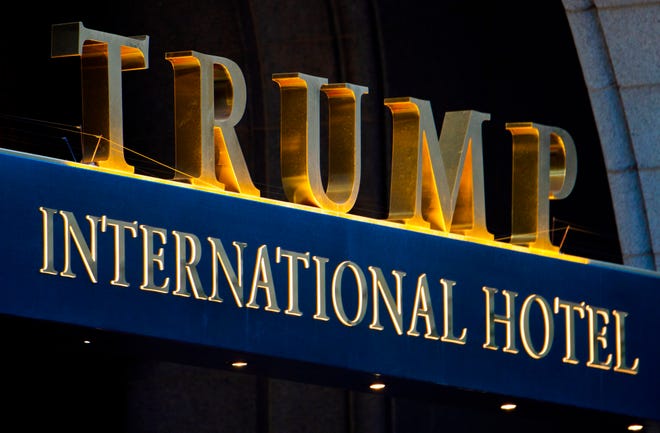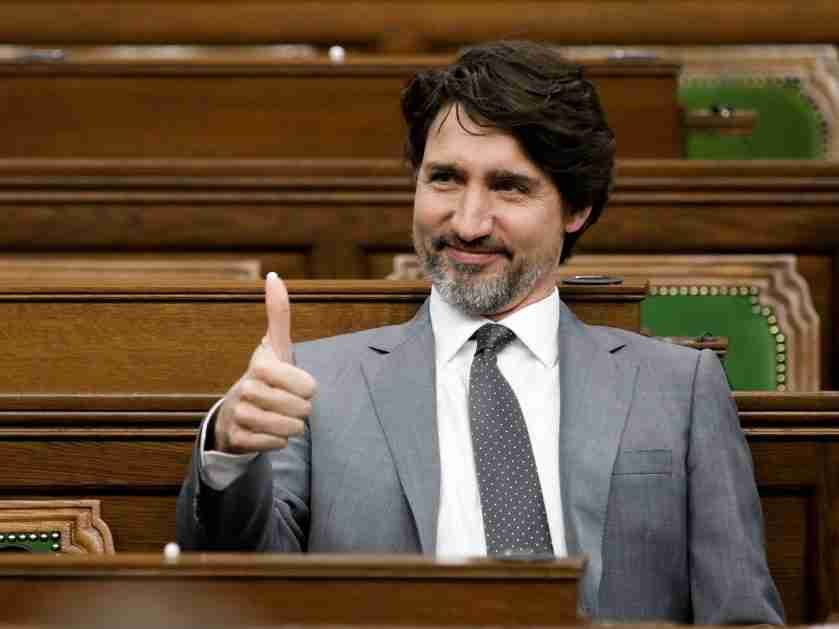Advertisement
The president’s final budget proposal of his term will offer a blueprint for his priorities if he wins re-election.

WASHINGTON — President Trump is expected to propose on Monday a $4.8 trillion budget that will include billions of additional dollars for his wall along the southern border and steep cuts to safety net programs like Medicaid, disability insurance and housing assistance, according to senior administration officials and documents reviewed by The New York Times.
The final budget proposal of Mr. Trump’s term is expected to reinforce the anti-immigration platform that helped propel him into office and will be a big part of his re-election campaign. Mr. Trump intends to ask Congress for an additional $2 billion to fund his border wall, according to people familiar with the plan, pressing ahead with one of his signature campaign pledges and setting up another clash with Democrats.
The White House budget is generally viewed as a political messaging document. Congress, which is responsible for approving government spending, is under no requirement to adhere to White House requests. Lawmakers have previously rejected many of Mr. Trump’s attempts to gut domestic programs.
But this year’s budget will serve as a blueprint for Mr. Trump’s priorities if he wins a second term. And some of the proposals can be achieved without the approval of Congress.
The president’s plan includes what officials described as $4.4 trillion in spending cuts over the next decade, with about $2 trillion coming from changes to safety net programs and student loan initiatives.
Those reductions encompass new work requirements for Medicaid, federal housing assistance and food stamp recipients, which are estimated to cut nearly $300 billion in spending from the programs. The budget will also cut spending on federal disability insurance benefits by $70 billion and on student loan forgiveness by $170 billion.
The budget will propose cutting foreign aid spending by 21 percent and, as in previous budgets, eliminate funding for the Corporation for Public Broadcasting. It would cut the Centers for Disease Control and Prevention budget by 9 percent but increase funding levels for the center’s infectious disease activities. It targets specific programs, including some at the National Institutes of Health, for cuts.
The budget also assumes Mr. Trump’s 2017 tax cuts are extended for 10 years: It includes $1.4 trillion to extend the individual tax cuts to 2035. And it includes $1 trillion in new infrastructure spending, including $200 billion for high-priority projects. The budget would slightly increase military spending and reduce nonmilitary domestic spending by 5 percent, defying a budget agreement struck last year by congressional Democrats and Republicans.
Given that budget agreement — which both parties agreed to over the summer as part of a two-year spending deal — it is unlikely that Congress will accept such draconian cuts, particularly for housing, environmental programs and the arts.
In the Democratic-controlled House, it is all but certain to be declared a nonstarter. And at the beginning of Mr. Trump’s administration, when Republicans controlled both chambers, the administration’s budget proposal largely failed to gain traction on Capitol Hill.
In a statement, Representative John Yarmuth, Democrat of Kentucky and the chairman of the House Budget Committee, accused the president of “apparently going back on his word” on the budget agreement by “proposing deep cuts to critical programs that help American families and protect our national security.”
“Congress will stand firm against this president’s broken promises and his disregard for the human cost of his destructive policies,” Mr. Yarmuth said.
A senior administration official acknowledged that reality on Sunday, saying “our hope is that Congress will consider these and not make us wait for the future. But we do realize that under a two-year spending agreement right now, this conversation may get pushed to the future.”
Mr. Trump, who campaigned on a promise to eliminate the federal deficit within eight years, projects a balanced budget in 2035, assuming strong, sustained economic growth and the enactment of trillions of dollars in proposed spending cuts, a senior administration official said Sunday.
The White House projects that the deficit — which has ballooned as a result of Mr. Trump’s tax and spending policies — will fall below the trillion-dollar mark, to $966 billion in the 2021 fiscal year.
The Congressional Budget Office said in January that it projected that the United States deficit would top $1 trillion annually over the next 10 years, reaching $1.7 trillion in 2030.
The administration’s budget predicts a more sanguine deficit number through robust economic assumptions for the next 15 years, including sustained growth near 3 percent, as well as spending cuts.
The budget predicts the United States economy will grow at a 2.8 percent rate this year, which is more than a half percentage point more than forecasters at the Federal Reserve and the Congressional Budget Office predict. It then sees growth rising above 3 percent annually for the next several years if the administration’s policies are enacted. The Fed, the budget watchdog and others all see growth falling below 2 percent annually in that time.
Growth in 2019 fell nearly a percentage point short of White House projections. Officials on Sunday attributed a half-point of that shortfall to the effects of American trade policy — specifically, uncertainty over the resolution of trade talks with China and congressional approval of a new trade agreement with Canada and Mexico. They said those uncertainties were now resolved and that growth would accelerate accordingly.
The administration has also revised down its estimate of the interest the federal government will pay to borrow money over the next decade, an assumption that reduces budget deficits by $1.5 trillion over a decade.
In addition to the border wall funding, Mr. Trump plans to ask Congress for $15.6 billion for the Customs and Border Protection agency, a 7 percent increase from current spending levels, and $9.9 billion for Immigration and Customs Enforcement, a 23 percent increase.
A senior administration official said that the budget would ask for big spending increases on infrastructure, technology and law enforcement personnel, and that the money was needed to “gain operational control” of the border.
Mr. Trump is asking for less than the $5 billion in wall funding that he sought a year ago, which resulted in a five-week government shutdown. Since then, he has been shifting funds that Congress allocated for military construction projects to pay for the new border barrier.
Congress previously agreed to provide $1.375 billion for wall construction, far less than the $18 billion Mr. Trump asked for in 2018. Last year, after declaring a state of emergency when Congress did not yield to the request for $5 billion, the Trump administration diverted about $6.7 billion from military construction funds and other money intended for cracking down on illicit drugs to pay for the wall. It plans to use $7.2 billion of those funds this year.
The shifting of that money has set off a string of legal battles between the Trump administration and opponents of the wall, who argue that the president is wrongfully appropriating funds that were meant for other projects. A federal court ruled in January that some of those funds could be used to build 175 miles of barrier in parts of Texas, Arizona and California.
Mr. Trump’s immigration budget request, which was reported by The Wall Street Journal on Sunday, is not expected to include money to reimburse the military for funds that the White House reallocated for the wall.
Last month, Mr. Trump drew criticism from Democrats for suggesting during an interview on the sidelines of the World Economic Forum in Davos, Switzerland, that he would consider cuts to entitlement programs such as Social Security and Medicare if he won a second term. He has since tried to reverse those comments; in a tweet on Saturday, he said no such cuts would be proposed in the upcoming budget request.
The budget for Medicare will be largely similar to what the White House has proposed in previous years, according to a person familiar with the plan. It will suggest a number of policy changes designed to reduce spending by targeting what officials believe is waste in the program.
Many of the suggested tweaks are identical to proposals from the Obama administration’s budgets for the program. Taken together, the changes would represent around half a trillion dollars in reduced Medicare spending but do not include any major reductions to benefits or eligibility, like those proposed in House budgets when Republicans controlled that chamber.
But on drug prices, an issue the president talks about often, the budget will diverge from previous years. Instead of proposing a suite of specific policy changes, it will instead set a dollar target: $135 billion in savings linked to lower prices over a decade.
A senior administration official said the target was designed as a signal to Congress to negotiate the policy package of its choice. The dollar total is similar to the budget score for a bipartisan bill from Senator Charles E. Grassley, Republican of Iowa, and Senator Ron Wyden, Democrat of Oregon, that Mr. Trump referenced last week in his State of the Union address without specifically endorsing.
That bill passed the Senate Finance Committee but has not received a floor vote. The House recently passed its own bill to lower drug prices, which would save significantly more.
The administration is also deviating from previous budgets by not proposing a specific plan to repeal and replace the Affordable Care Act, though it supports a lawsuit that could eliminate Obamacare entirely. The White House had previously recommended eliminating funding for the coverage expansions created by the law and adopting a congressional proposal that would provide block grant health funding for states to design their own programs. The new budget will propose an overall savings target for health care reform, but it reveals fewer details about how those savings would be achieved, according to a senior administration official.
Emily Cochrane contributed reporting.

